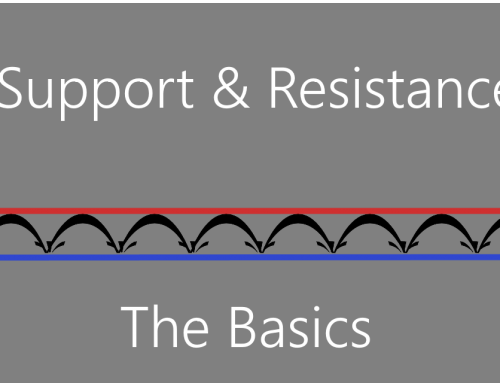Some think a Trading Journal is nothing more than an organized way to keep track of your transactions. However, experienced traders know that the real benefit of an effective Trading Journal is its tremendous value as an educational and self-awareness tool.
Using a Trading Journal will help us recognize our individual trading strengths, weaknesses and biases. Remember the old adage that says, “Those who do not learn from the past are condemned to repeat it.” This rings especially true here. A trading journal can help us to understand our weaknesses and turn them into strengths.
We break the Trading Journal into three major categories: (1) the numerical input, (2) the decision-making process, and (3) the “What can I learn from the trade?” review.
Numerical Input
Begin your journal by listing: the date of each transaction, the stock, the number shares bought or sold, the dollar amount, the commission, and the net gain or loss. Anyone trading in a non-retirement account needs to keep track of these numbers in order to do their annual tax accounting. This component of the Trading Journal also answers the cold-hard bottom line question – “Are you making or losing money?” Note: There are several ways to actually keep track of your trades. Many on-line brokers provide some helpful programs. Quicken has a fully integrated import utility that hooks up with your online broker to track trades, which makes tax time a breeze! Another way to keep track of your trades is to build your own personalized excel spreadsheet.
Decision-Making Process
Why did you buy or sell the stock? Include your Trading Plan for the stock in this section. The best trading decisions come from following your trading plan, not by making an emotional spur-of-the- moment decision. Dr. Alex Elder begins his best selling book “Trading for a Living” with an interesting presentation on “Individual Psychology.” He suggests that in many cases, it is as valuable to spend time analyzing our individual trading psychology, as it is to spend time studying the markets. Dr. Elder says, “You need to be aware of your tendency to sabotage yourself. Stop blaming your losses on bad luck or on others and take responsibility for the results. Start keeping a diary – a record of all your trades, with reasons for entering and exiting them. Look for repetitive patterns of success and failure.” He recommends printing out a chart of your stock before you buy and after you sell the stock, annotating it with your entry and exit points to paste into your trading journal. As Dr. Elder says, “we don’t have the luxury of making decisions in the middle of the chart, we can only work at the right edge where the next entry is an unknown.”
Some of the most important items to include in this section are your thoughts, concerns, expectations, and overall emotional state at the time of the trade. Feelings like “I feel like I am missing the move” or “I have missed it, it gapped up and its too high now.” It is important to make notes of market conditions or situations. For example, a trader may write, “I bought late Thursday in anticipation of a benign employment report at Friday’s open. Lately, we’ve had nice upside gaps on the report.”
Make sure you try to identify any feelings of fear or greed. Try to take the time to really analyze your feelings during the decision- making process. After a big win, we tend to feel invincible. After a big loss, we tend to feel an urgency to make it back quickly. Make it a rule not to ever change your trading plan on a stock while you hold an open position. If relevant, note outside influences that could have affected your decision-making process – Were you sick? Mad at the dog? On mind/mood altering medication? Or, were you too busy to really analyze the stock in depth so you shortcut the whole trading plan? Whatever is affecting you; write it down. Sometimes outside influences can make our decisions less than rational. If you don’t write it down, you may never realize the effect something may have had on your decision-making process. You can even use shorthand or numerical codes for your notes in order to save time (or so others can’t decipher your code!).
It is important to identify your thoughts and emotions because these are integral components as to why you win or lose in this business. If you relentlessly focus on your trading mistakes and strive to eliminate them from your trading, the winners will take care of themselves.
What Can I Learn From the Trade?
This is the component of the Trading Journal where the rubber meets the road! Although a trade may end when you exit the position; that is often when the learning begins. One of our favorite definitions of insanity is “continuing to act in the same way, but expecting different results.” This section of the journal answers the questions, “Now that I see the past with 20/20 vision, what would I have done differently? What did I do right? Did I miss some obvious technical indicator? Did my emotional state of mind affect my success? Did I follow my trading plan? Did I set my stop at reasonable level?” When you review your trades after the fact, it’s amazing how easy it is to find a nugget of information that will help you on one of your next trades. We can’t force stocks to always go up, but we can learn to work with what a stock gives us. Moreover, the difference between progressing and stagnating is our ability to learn from our experiences.
If you are already keeping a Trading Journal, congratulations! Review your method and see if there is room for improvement by adding charts or some other details. If you don’t keep a Trading Journal, start today! Set apart some time each week to keep your journal up to date. We recommend that you refer to your journal often because as the market changes, you may look at your past decisions from a different viewpoint and learn new things. Some traders find that sharing their journal with a respected colleague is a good way to learn even more! Be aware that this can be a humbling experience. As RightLine founder Roger Perry once said, “I was literally too embarrassed to have another trader help me to review my journal. When I finally worked up the guts to do it, what I learned caused the biggest improvement in my trading I have ever made.”
Is keeping a Trading Journal easy? Yes and no. It really isn’t too hard, but like anything good, it takes time, effort, and consistency to make it worthwhile. If it is done correctly, it may make the difference between being an average trader and an exceptional trader. Keep your head up, learn from both your successes and mistakes and move on to the next trade!






